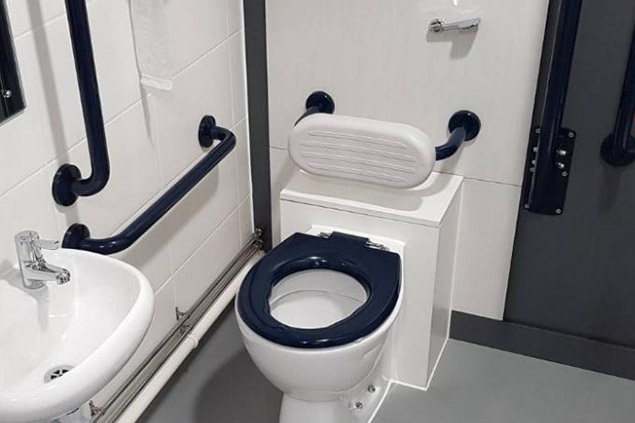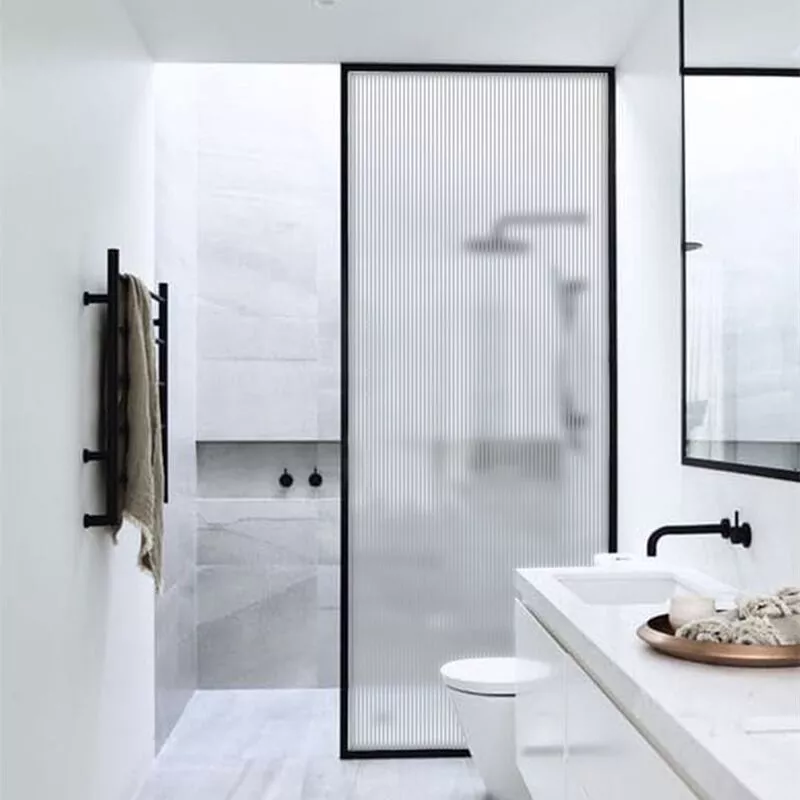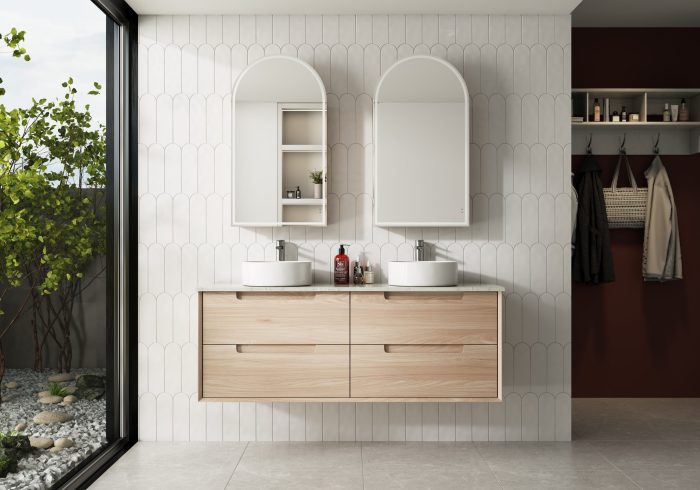One’s business or establishment deals with lots of people. And these patrons are not all the same. They have their differences. Regardless of this, you, as an owner, should treat them equally. And a bathroom could be a great start for this.
Bathroom talks are not only about gender but also about people who need certain functionalities like the disabled so they can easily and conveniently do their business in the bathroom. And this is where disabled toilets come in. Disabled toilets or accessible toilets are geared toward disabled persons who are in wheelchairs. As such, the disabled toilet should be a toilet that disabled users can easily enter. It should be large enough for their wheelchairs and designed based on their needs.
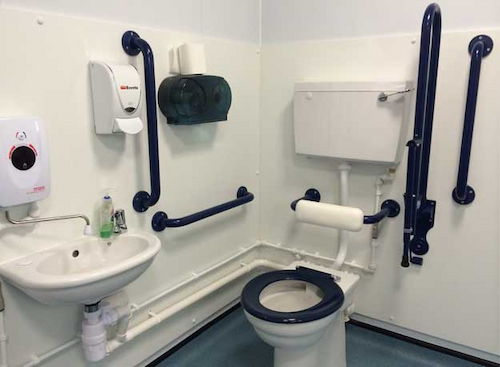
Disabled Toilet Requirements
Not all toilets are disabled, some are just the standard, and some are ambulant. To put it short, there are certain disabled toilet regulations to be followed to say that a toilet is an accessible one. And following these disability toilet regulations and standards says a lot about how much one values their patrons.
So, what are the general requirements for disabled toilets in Australia?
- All changing equipment should be in the same area or the same room. This ensures accessibility for those with mobility problems.
- If the disabled toilet is reserved for both sexes, it should be placed in a way where the disabled person who ought to use it need not pass or cross an area reserved for one sex.
- To ensure further safety, safe flooring options are mandated. It is subsequently required that the ground surfaces be slip resistant with a rating of not less than R10 or P2 per the Australian Standard Slip Resistance Rating for Pedestrian Floor Surface Materials (AS 4586).
- It should have signage that identifies the suitability of the toilet to left and right and use
- An emergency alarm that could easily be reached from the pan
- Grab rails installed beside and behind the pan.
What is the Minimum Size of a Disability Toilet?
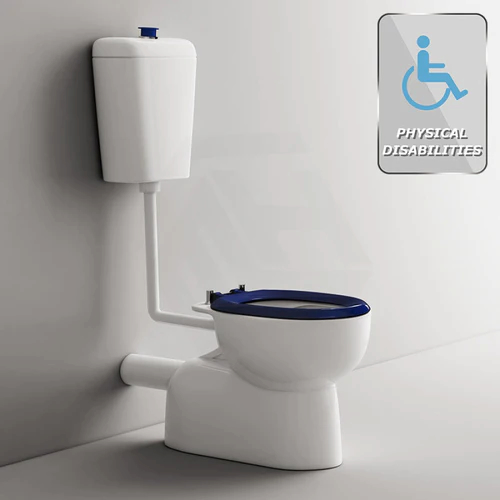
The disabled toilet layout and dimensions separate it from the regular and ambulant ones. Ensuring correct disability toilet dimensions and measurement is necessary to ensure that people with mobility issues will have less difficulty accessing the toilet. In line with this, minimum accessible toilet dimensions should be observed. So, what are the measurements for disabled toilets?
Based on the disabled toilet dimensions Australian standard, a disabled toilet layout should have the following dimensions:
- 1900 – 2300mm pan circulation space (minimum) which is larger than ambulant toilet dimensions.
- 790 – 810mm distance between the front of the pan and the rear wall.
- At least 850mm clear opening width doors
- 450 – 460mm centerline of the pan from the adjacent wall
These are not the only things you need to consider when including a rimless disabled toilet suite in your establishment or business. They are the measurements most necessary to ensure minimum convenience; of course, no one deserves the bare minimum, so it will be better to know other toilet design considerations aside from these measurements.
Other Disabled Toilet Design Considerations
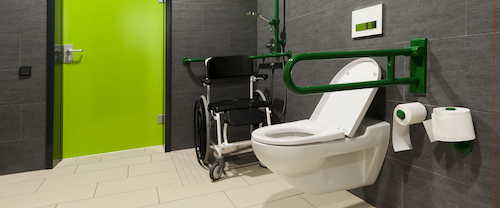
Aside from the dimensions, you also need to consider several things. Some of them are the ones below.
Space around the toilet
The space around the toilet is not only for wheelchairs. Remember that the people who will use a disabled toilet are those with mobility problems. Hence, there will be times when caregivers will help the person. So, the disabled toilet size should consider not only the person and wheelchair but also the caregivers.
Grab rails
Grab rails support persons with mobility problems so they can sit down and get up from the wheelchair to the toilet and vice versa. With regards to this, grab rails of 30 – 40mm should be installed at 800 – 810 mm height and within an appropriate distance.
Toilet paper
Toilet paper holder should also be present and placed at a distance of no greater than 300mm forward of the pan and at the height of around 700mm.
Soap dispenser and Hand dryer
These things should be placed at the height of no greater than 900 – 1100mm.
Alarm system
Unforeseen events can happen anywhere, including a bathroom, so a disabled toilet should also have an alarm system to let a person with a disability contact those outside in case of emergencies.
Conclusion
Knowing disabled toilet dimensions or disabled toilet size is necessary if you want to give the convenience most people experience to those with mobility problems. It is likewise important to ensure that it follows other requirements, such as the placement of bathroom needs. And, of course, having a quality toilet that is safe, functional, and pleasing should not be forgotten. And suppose you are clueless about where to get these toilets. In that case, you can visit MyHomeware and its wide selection of disabled special care toilets.
FAQs about Disabled Toilets Dimensions
Most people call a toilet intended for people with a mobility problem a disabled toilet. However, “disabled toilet,” despite being used in today’s day-to-day life, is not the best thing to call it. Instead, it is more appropriate to call it an accessible toilet. But suppose the toilet is intended for people who do not use wheelchairs regularly. In that case, the toilet is called an ambulant toilet.
People with mobility problems use an accessible toilet through the grab rails installed inside the bathroom. The toilet frames placed around the toilet can support those with mobility problems to lower down to the toilet seat and get up again. Most grab rails are made of aluminum, like those of MyHomeware’s grab rails.
Technically, an able person can use it; however, it is very disrespectful. Using a disabled toilet if you are not disabled is a matter of courtesy. Regular toilets can be hard for those with mobility problems, so accessible and ambulant toilets are made for them. Therefore, if you are able, a disabled toilet is not right for you to use it.

